Expert’s Rating
Pros
- Camera still great
- Some of the best software around
- Superbly bright and accurate screen
Cons
- Yet another price bump
- Design sharper but more generic
- Battery life fine rather than great
Our Verdict
The Pixel 9 Pro XL is an excellent flagship phone, but it doesn’t quite make enough meaningful progress to justify its elevated price tag, nor the same level of praise we heaped upon its predecessor. Meanwhile, its new design is sharp but disappointingly unoriginal.
If you remain unconvinced that Google is serious about taking the smartphone fight to Apple and Samsung, the Pixel 9 range should leave you in no doubt. This expanded lineup has a purposeful (if rather familiar) new look and an extra ‘Pro’ option, both of which closely mirror Apple’s approach.
Sitting atop this new range is the Google Pixel 9 Pro XL. While the name might be new, in practice this phone is the direct successor to the Google Pixel 8 Pro, which we liked rather a lot. The Pixel 9 Pro is the real new phone in the range, providing the same features as the XL in a much smaller package.
Once again, you’re looking at a large flagship phone with a well-stocked triple-camera system, a big and sharp 6.8-inch OLED display, a bagful of AI tricks up its sleeve, and a lengthy software update promise.
Fresh design and generational spec bump aside, none of this is inherently new. With an extra £100/$100 added to the price tag, business as usual might not cut it.
Design & Build
- New flat design is premium but derivative
- Shiny frame and matte back
- Slightly heavier than the Pixel 8 Pro
Google has issued its biggest smartphone design overhaul since it effectively hit the reset button with the Pixel 6 and 6 Pro. I have some mixed feelings about the results.
Starting with the positives, the Pixel 9 Pro XL is a beautifully crafted, well put together flagship phone. For all that we appreciate Google’s smartphone work, build quality hasn’t always seemed to be top of its priority list. While it’s still early days, the Pixel 9 Pro XL feels like a high-end phone, worthy of sitting on a desk alongside the Samsung Galaxy S24+ and the iPhone 15 Pro Max.
If you’re making such direct comparisons, just make sure you don’t sit them face-up, because you might end up going home with the wrong phone. My biggest problem with the Pixel 9 Pro XL is that it cribs so clearly from the Apple playbook, which also means that looks a lot like Samsung’s own tribute act.
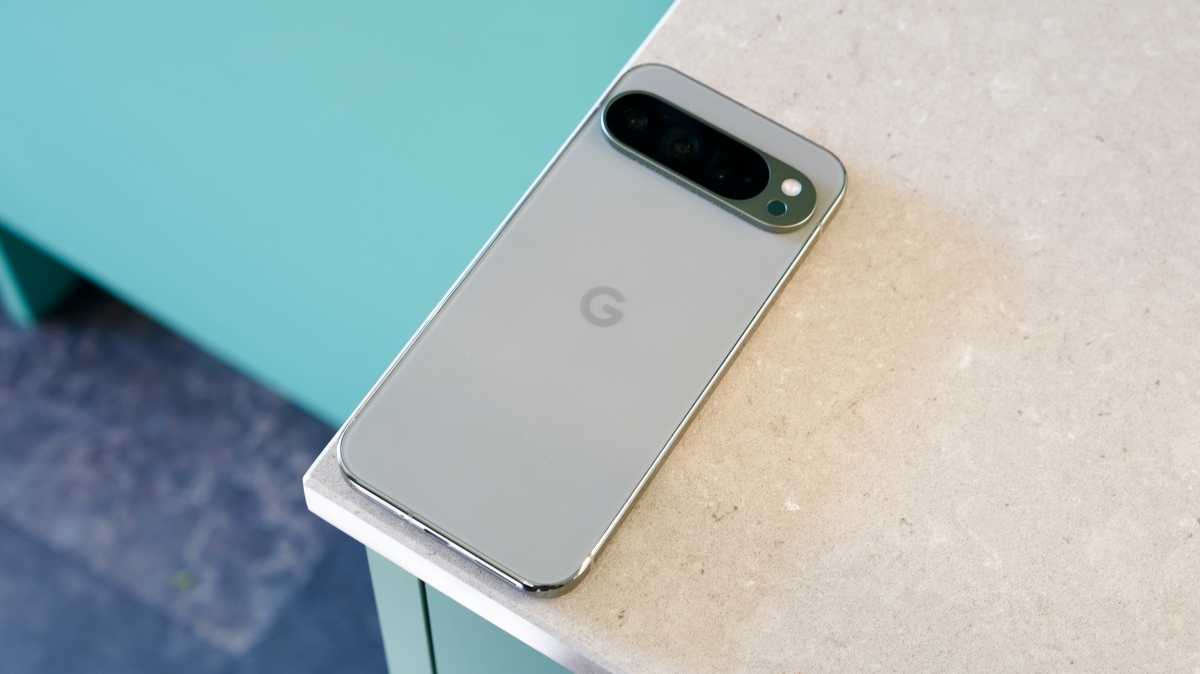
Jon Mundy / Foundry
The entire Pixel 9 range has got the kind of flat-edged, curvy-cornered look that will doubtless have Apple’s designers raising an eyebrow, if not consulting their legal team. At 162.8 x 76.6 x 8.5mm, its width and thickness are within fractions of a millimetre of the iPhone 15 Pro Max, while it weighs exactly the same at 221g (which is 8g heavier than the 8 Pro).
This is especially unfortunate because Google had managed to carve out its own distinctive design language in previous models. It would perhaps be a stretch to call the Pixel look iconic – Google doesn’t sell enough phones for that – but in a market full of Apple clones and generic curved-edge Android phones, the Pixel line stood out.
The Pixel 9 Pro XL is a beautifully crafted, well put together flagship phone
Thankfully, it hasn’t lost all semblance of originality. The signature Pixel camera visor might not be the flowing, edge-to-edge point of interest that it used to be, but it still makes quite a statement. This time it’s a wide pill-shaped module that stops just short of either edge.
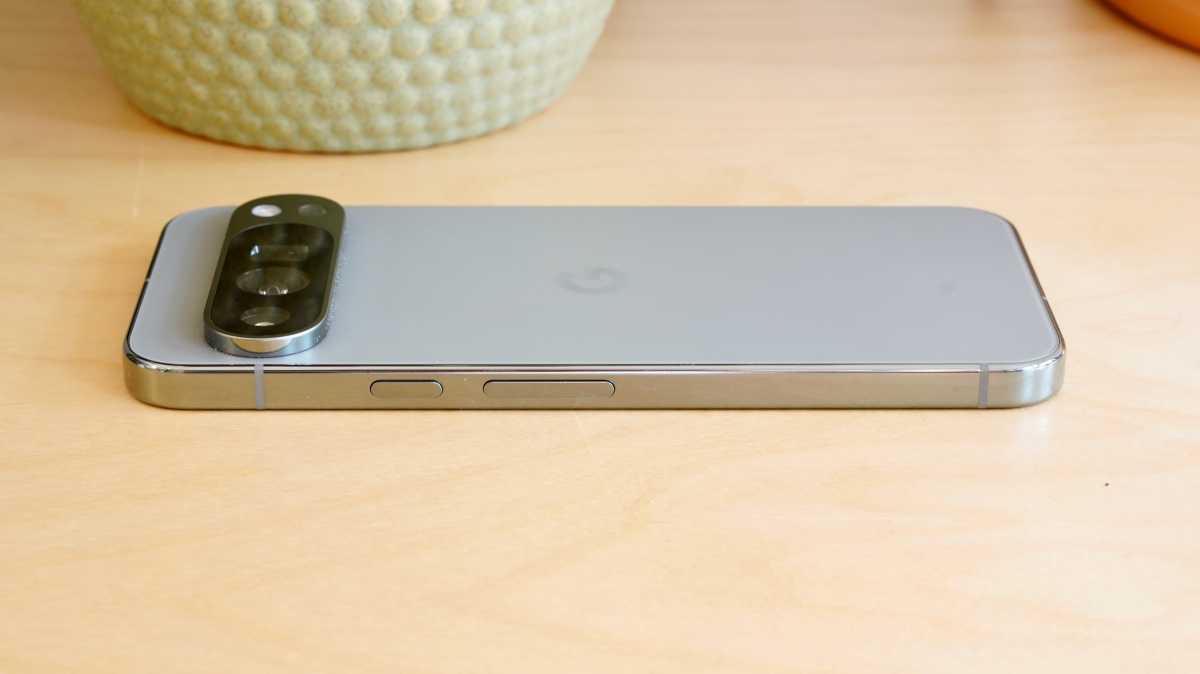
Jon Mundy / Foundry
It’s purely subjective, but I prefer it to Apple’s lopsided approach and Samsung’s drab floating camera islands. It ain’t subtle, but it’s stylish and it means that the phone is stable when you set it down on a flat surface.
The Pixel 9 Pro XL promises to be at least as tough as its predecessor, with the same Corning Gorilla Glass Victus 2 to the front and rear, as well as a metal frame with a shiny finish. I prefer the Pixel 9’s matt frame, but on the this year’s Pro phones do now get a nicer matt finish to the rear.
My model comes in Hazel, which comes across as a kind of putty grey. I also happen to have the smaller Pixel 9 Pro in the Rose Quartz shade, which makes quite the statement with its pale pink finish and glitzy rose gold-like frame. Obsidian and Porcelain have your black and white(ish) options covered.
As you’d expect from a high-profile flagship phone, the Pixel 9 Pro 9 XL is IP68 certified, so it’ll stand up to a drenching as well as the most heinous of pocket lint attacks.
Screen & Speakers
- Superb 6.8-inch, 120Hz OLED
- Up to 1344 x 2992 resolution
- Much brighter than before
- Good stereo speakers
The Pixel 9 Pro XL’s Super Actua display outshines its glorious predecessor, which is saying something. It’s a little larger at 6.8 inches (up from 6.7 inches), with the same 1344 x 2992 maximum resolution.
I say ‘maximum’ because Google annoyingly sets the default resolution to a lower 1008 x 2244. You’ll need to slide into the Settings menu and activate the full resolution manually. This might betray a slight lack of confidence in its power management on Google’s part, but we’ll get to that later.

Jon Mundy / Foundry
There’s no lack of confidence with the rest of the Pixel 9 Pro XL display’s output. It now hits up to 2000 nits in HDR scenarios, with a peak brightness of 3000 nits. With auto brightness turned off, I measured a maximum brightness of 1198 nits, which is outstanding for at-home testing.
Colour accuracy is also impeccable. I was quite happy to stick with the default Adaptive colour mode, which isn’t always the case even in flagship phones. However, if you do switch over to the Natural alternative, you’ll get superbly balanced sRGB calibration with a 99.6% gamut coverage and an average Delta E score of 0.65. This thing is beautifully calibrated, which is a good thing, because you don’t get the same fine tuning options that you do on some rival phones.
The Pixel 9 Pro XL’s Super Actua display outshines its glorious predecessor, which is saying something
This delightful screen is flanked (in landscape orientation) by a pair of stereo speakers, and they’re of a decent quality. They might lack the precision and balance of the iPhone 15 Pro, but they still perform well. The haptics, too, have that flagship phone pop and precision.
Specs & Performance
- New Tensor G4 not the fastest flagship chip on the market
- Bumper 16GB of RAM, likely for AI
- 128GB, 256GB, 512GB, and 1TB storage options
Google has equipped the Pixel 9 Pro XL with its latest-generation Tensor G4 chip, and at this point we could pretty much copy and paste our broad strokes findings over from previous Pixel phone reviews.
Once again, our usual CPU and GPU benchmark tests reveal a chip that falls well behind rival processors like Qualcomm’s Snapdragon 8 Gen 3 and Apple’s A17 Pro. If you’re after the very fastest flagship phone, the Pixel 9 Pro XL won’t stand up to a Samsung Galaxy S24 Ultra or an iPhone 15 Pro Max.
Tensor G4 is more than fast enough to execute all of the usual practical tasks with a similar sense of fluidity to rivals, however. Genshin Impact runs solidly, if not flawlessly, on maxed out settings.
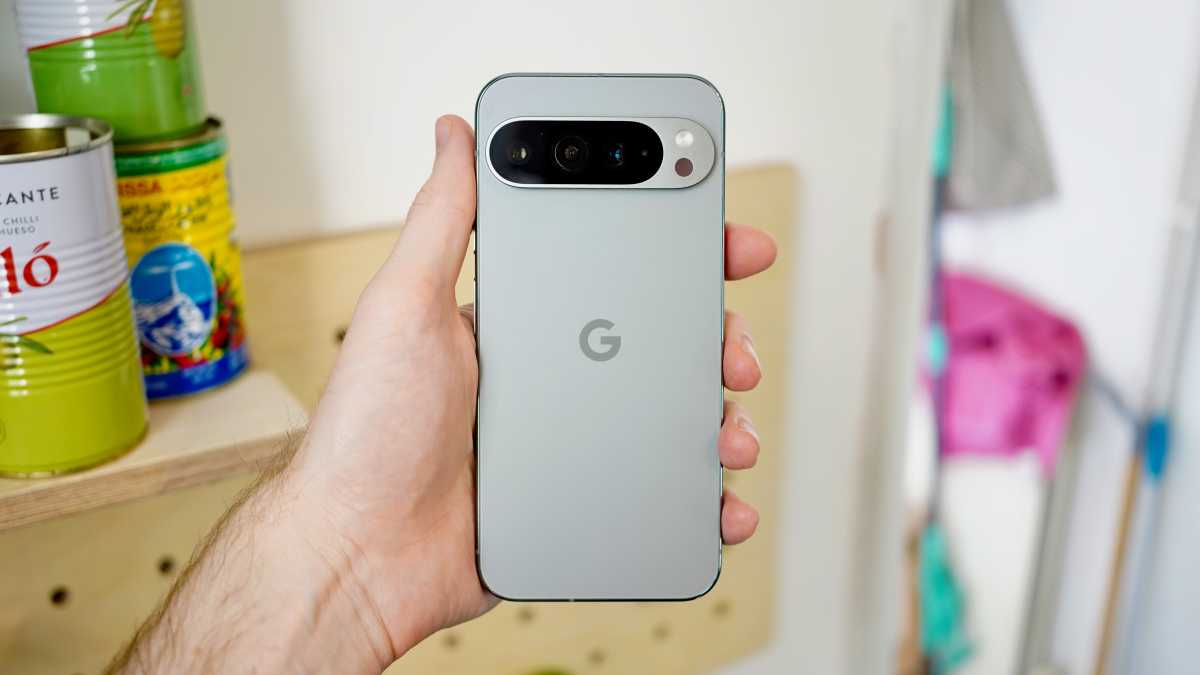
Jon Mundy / Foundry
As before, the Tensor G4’s focus isn’t on multitasking or pushing fancy lighting effects around. Google’s focus is now firmly on AI, and to that end it’s equipped the Pixel 9 Pro XL with a vast 16GB of RAM. Even the mighty Galaxy S24 Ultra ‘only’ gives you 12GB.
Tensor G4 is more than fast enough to execute all of the usual practical tasks with a similar sense of fluidity to rivals
Besides the various on-device AI tricks that we’ll get to in a moment, this extra RAM should help see the Pixel 9 Pro XL through its extended support cycle. We don’t know how well it’ll handle the applications of 2031, but it may just stand up to the job better than its contemporaries.
You get four storage options here, starting at 128GB and topping out at 1TB. There’s no microSD expansion potential, as expected.
Google Pixel 9 Pro XL benchmarks
Cameras
- Same strong triple camera set-up as before
- New 42MP selfie cam
- Add Me lets you insert yourself into group shots
- Potential for upscaled 8K video
The Pixel 9 Pro XL packs much the same rear camera system as the Pixel 8 Pro. That’s the same 1/1.31in 50Mp f/1.7 wide sensor and the same 48Mp 5x telephoto lens. The 48MP ultra-wide is a little different, with a narrower 123-degree field of view and a larger f/1.7 aperture.
Whatever the minuscule hardware differences, Google is all about the image processing, and the signature Pixel look is still very much intact. Shots taken with the Pixel 9 Pro XL might lack the natural nuance of the iPhone 15 Pro Max, but they pack a big contrasty punch without making everything look too weird or overblown.
Google’s processing-heavy approach still means that night shots tend to be disconcertingly bright. Again, not everyone will appreciate how Google eradicates any natural sense of shade or murk in such low light snaps, but for sheer image clarity, the 9 Pro XL is right up there with the best.
Google balances out colour and tone well from ultra-wide right up to 5x, and shots even look pretty good at 10x. Excessive noise makes 30x a bit of a no-no to my mind. They’re far from a disgrace, but the Pixel 9 Pro XL won’t be dethroning the Galaxy S24 Ultra in the extreme zoom stakes.
Talking of which, Google’s Zoom Enhance is a neat new trick, albeit one that was promised at the launch of the Pixel 8 Pro, and which is also available on that older phone. It takes your zoomed in and low-res shots and fills in the gaps between the pixels using AI, making them appear sharper. It works to a certain extent, in that fresh detail is undoubtedly supplied to such blurry images.
For sheer image clarity, the 9 Pro XL is right up there with the best
The effect can be somewhat uncanny, however, producing weird-looking textures in natural elements like shrubbery and in areas where there isn’t sufficient visual data to extrapolate from. In the below comparison image, which is a 30x shot taken with the 9 Pro XL, the Zoom Enhance shot is to right. As a way to bring older snaps up to some form of modern standard, there’s clear value here, but Zoom Enhance is far from being the finished article.


The new 42Mp selfie camera is the most consequential hardware upgrade here. Alongside auto-focus, it creates shots with first rate depth and dynamic range. You can choose between a classic close-up 1x view or a wider 0.7x, which is better for group selfies.
Talking of group shots, Google’s most fun new addition is Add Me, which lets you add yourself to group shots. You take your snap, then get someone to run over and take the phone while you take your place.
They can guide you into place using a handy preview screen, which factors in depth information. The effect is technically impressive, and I was able to have fun with the feature by taking a picture of two versions of me standing side by side.

Jon Mundy / Foundry
I do have to question the sense in which this is truly capturing the moment, however, in much the same way as I question the value of changing a grey sky to a beautiful sunny day. Call me old school (or just old).
Google has also finally brought 8K video to its smartphone range – kind of. Video Boost will take a standard 4K video and upscale it in the background. In my experience it notified me that the process was complete about two hours after I took it. With no 8K screen to hand, I can’t comment on the quality of the final footage, other than to say that it looked good on a modern MacBook Pro screen.
Battery Life & Charging
- Day-long battery life with maxed out settings
- Supports Google’s 45W charger (not supplied)
- Other chargers don’t seem to work so well
Google has equipped the Pixel 9 Pro XL with a slightly larger-than-average 5,060mAh battery, but it doesn’t make for especially impressive stamina. Don’t get me wrong, the phone will last the vast majority of people through a full day, but there were one or two occasions where it made me nervous.
The phone will last the vast majority of people through a full day, but there were one or two occasions where it made me nervous
On one 15 hour day of especially intensive usage across a range of network environments, with around 6 hours and 25 minutes of screen on time (including 2 hours 20 minutes of YouTube viewing and a bunch of camera shots), I was left with just 6% left in the tank.
Admittedly, that’s at the extreme end of my usage, and I suspect most other people’s too. But I still would have liked a little more headroom from my super-sized flagship phone.
It should be noted that this was with the display resolution bumped right up to the maximum, so you would definitely get more battery life by keeping it at the default. Samsung does the same thing with the Galaxy S24 Ultra, but it manages to wring more impressive stamina out of its flagship phone regardless.
As a curious side note, the Pixel 9 Pro also has a lower resolution by default, though the regular Pixel 9 doesn’t, suggesting a fundamental difference in display tech between the tiers.
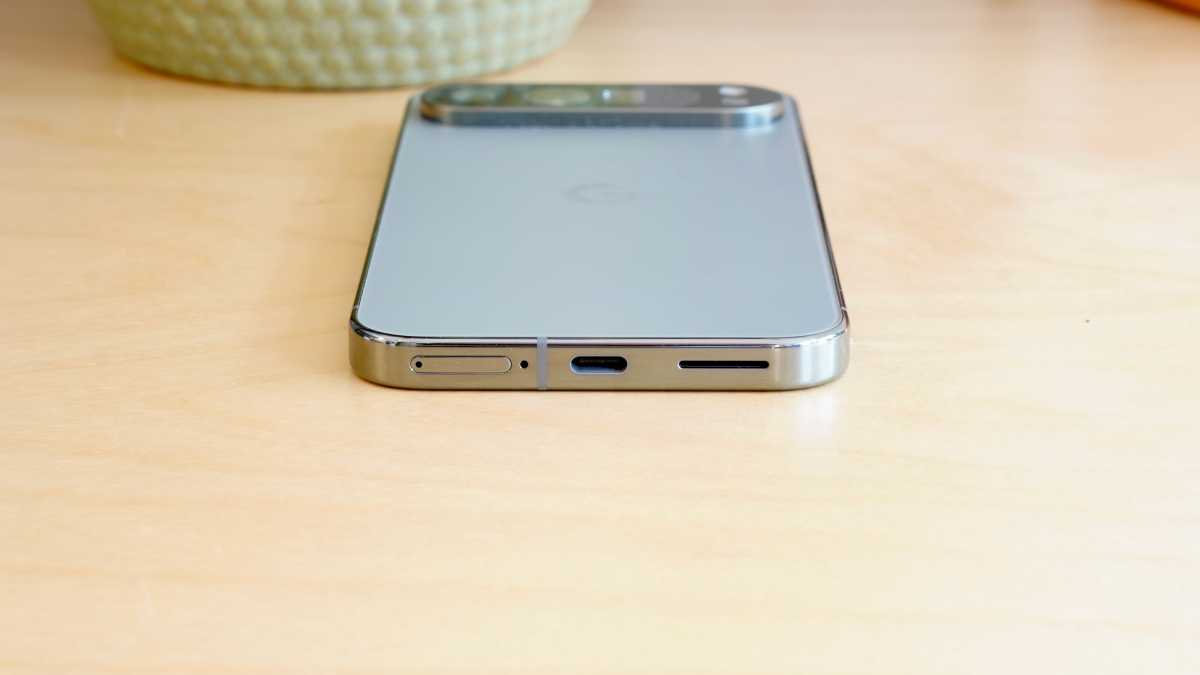
Jon Mundy / Foundry
Perhaps I’m being harsh here. After all, the Pixel 9 Pro XL lasted 10 hours and 1 minute on our usual PC Mark World 3.0 battery test – an improvement of around 30 minutes over the Pixel 8 Pro. On the other hand, the Galaxy S24 Ultra lasted more than two hours longer, and that has to be the benchmark that premium Android phones are aiming for in 2024.
Google has improved the charging provision for the Pixel 9 Pro XL, but it’s not a major cause for celebration. 45W is better than before, but it’s still far from best-in-class. What’s more, you’ll need to splash out on Google’s specific USB-C Power Charger accessory if you want to attain the claimed speeds of 0 to 70% in 30 minutes.
I tried charging the phone with both a recent 120W Oppo charger and a 30W Asus charger, and got the same lesser result of 0 to 55% in 30 minutes. Whatever method Google is using to wring out the maximum charging speed here, it sure is finicky.
23W wireless charging is also attainable, though again you’ll need to invest in Google’s bespoke Pixel Stand accessory. Alas, the latest Qi2 standard is not supported.
Software & Apps
- Android 14, with Android 15 to follow
- Seven years of updates
- Pixel Studio and Pixel Screenshots added
Google launched the Pixel 9 family way earlier in 2024 than it usually would, and as a result Android 15 isn’t ready for the launch at the time of writing. This means that the Pixel 9 Pro XL, like the rest of the range, ships with Android 14.
That’s a little awkward for a major flagship phone. At launch, the experience of actually using the Pixel 9 Pro XL day to day is much like the experience of using the Pixel 8 Pro.
However, this instantly places it near the top of the smartphone league, ahead of all the cluttered custom UIs from Samsung, Xiaomi, Oppo and co.
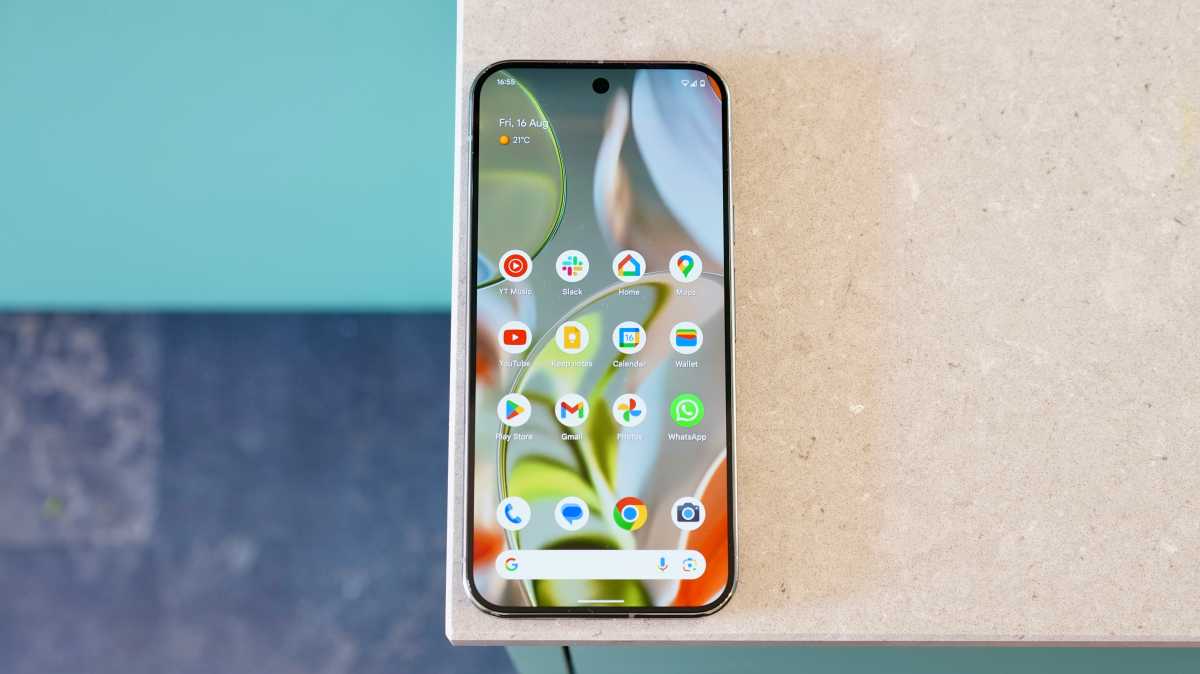
Jon Mundy / Foundry
The curious Thermometer app makes a return, tying in with the sensor found just below the camera flash on the Pro models. It can take the temperature of your coffee or your hob, but it still hasn’t received the necessary regulatory approval to be used on people, which renders it somewhat less than useful.
At launch, the experience of actually using the Pixel 9 Pro XL day to day is much like the experience of using the Pixel 8 Pro
Google is way more interested in AI than vanilla software these days, and the likes of generative AI wallpapers, voice note summaries, and real time translation make a return. The main tweak with the 9 series is that Gemini AI is now the default assistant, rather than Google Assistant.
Gemini is very (often spookily) smart with its understanding of conversational requests and has the ability to respond in kind. Asking for a picture of a pig wallowing in mud didn’t just surface said picture – it also provided a brief audible and textual summary of why they do so.
However, I still find Gemini to be lacking when it comes to basic Google service integration. For example, it doesn’t always play nicely with the network of Google Nest and Chromecast Audio speakers dotted around my home, frequently failing to understand which device I’m referring to when I issued a request to play some music or set a timer.
It also doesn’t automatically hook into my YouTube Music account and play music from an artist when I ask it to. My Pixel 8 with Google Assistant handles this just fine.
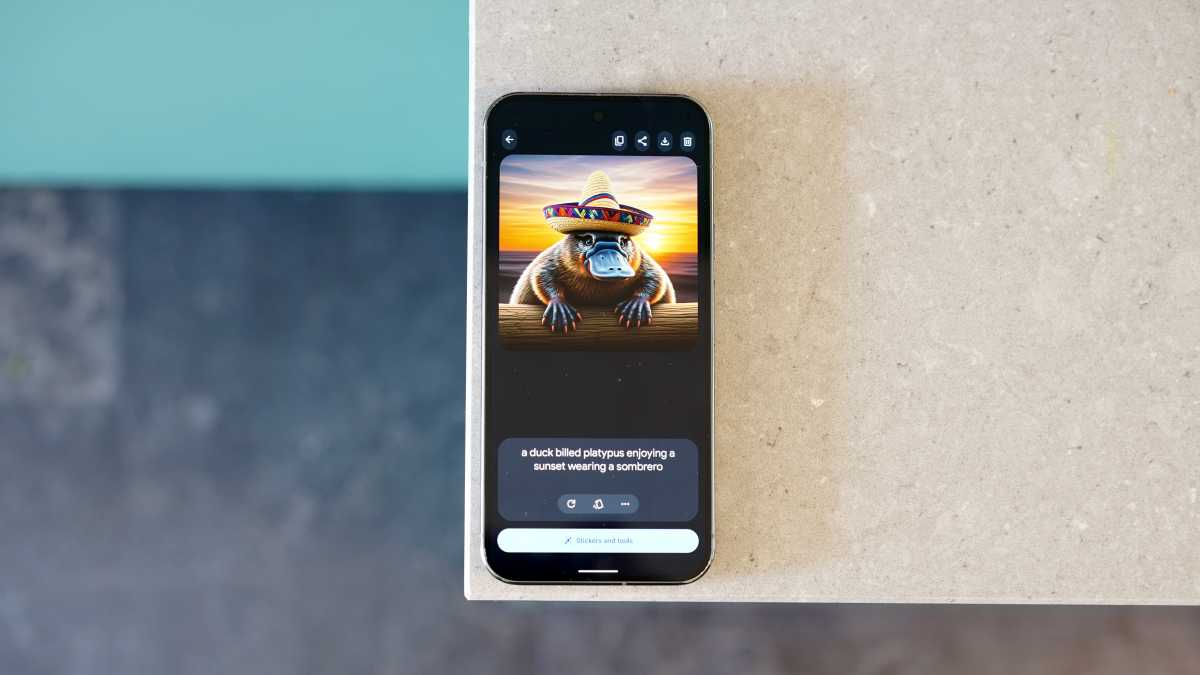
Jon Mundy / Foundry
There are a couple of new artificial intelligence apps that make their debut with the Pixel 9 range, too. Pixel Studio is the one you’ll probably use to show off to your friends and family, before forgetting all about it. It lets you type in any descriptive term you like, then creates an appropriate piece of AI-generated artwork. If you’ve ever wondered what “a duck-billed platypus enjoying a sunset wearing a sombrero” looks like, well, just type it into this app. After a few seconds of AI processing, Google will show you.
Less showy but potentially far more useful is Pixel Screenshots. If you’re someone who’s always pressing those power and volume-down buttons to capture something important on your phone’s screen, this is the tool for you. It collates all of your screenshots, using AI to produce smart summaries of the information contained within, as well as making them searchable. You can add screenshots to collections, or add your own contextual notes.
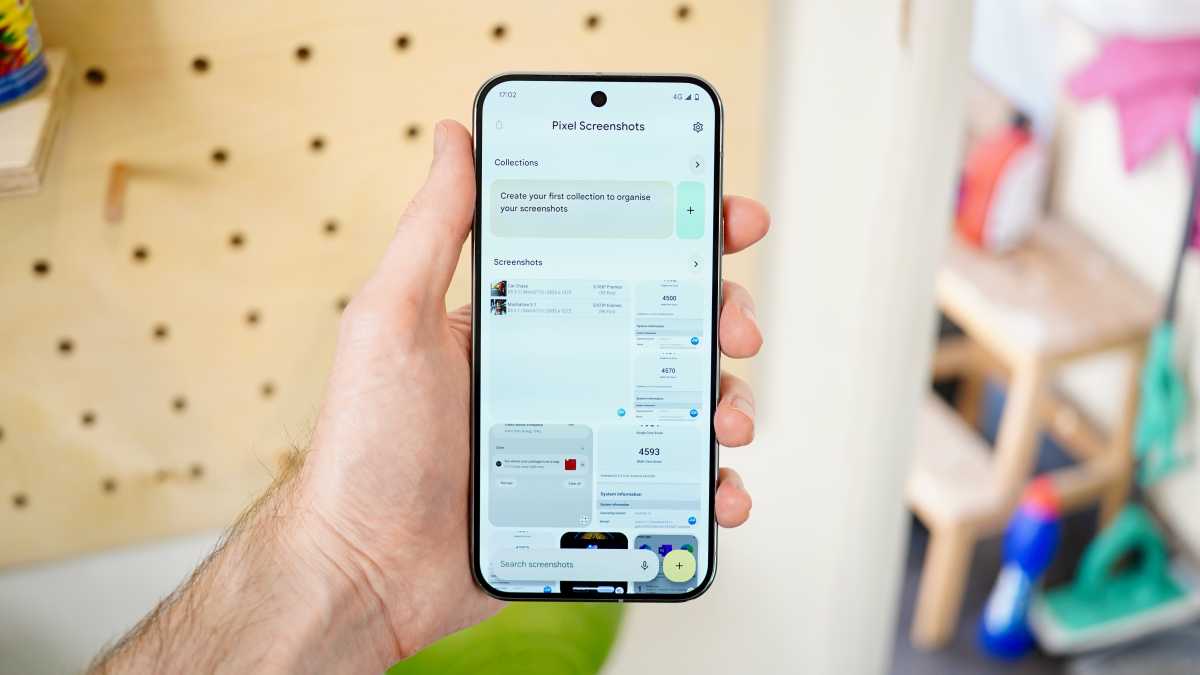
Jon Mundy / Foundry
Once again, Google is offering seven years of Android versions and security updates, making it the best in the business alongside Samsung.
Price & Availability
As you can probably tell, the Pixel 9 Pro XL is a phone of fairly modest upgrades – visual overhaul notwithstanding – which makes it all the more problematic that it has received a considerable price hike. All four storage options have received a £100/$100 bump over their Pixel 8 Pro equivalents.
The 128GB model starts things off from £1,099/$1,099, while the 256GB model costs £1,199/$1,199, the 512GB unit costs £1,319/$1,319, and the range-topping 1TB model will set you back £1,549/$1,549.
Outright, the phone is available from the likes of Google and Amazon in the UK and Google and Amazon in the US. See more options in our Pixel 9 deals article.
On contract, see the best options in the widgets below.
The outright price places the Pixel 9 Pro XL perilously close to the mighty Samsung Galaxy S24 Ultra (from £1,249/$1,299.99) and the iPhone 15 Pro Max (from £1,199/$1,199).
See more alternatives in our guide to the best phones you can buy.
Last year’s model itself represented a major price hike over the Pixel 7 Pro, yet it still offered a notably cheaper alternative to its premium rivals.
Why is this year’s model suddenly deemed a direct competitor worthy of the same outlay? The only aspect that’s really going the extra mile here is the bump up in RAM, which is hardly the most exciting of high-end features.
Should you buy the Google Pixel 9 Pro XL?
The Pixel 9 Pro XL is another excellent flagship phone from Google, holding much of the same appeal as the Pixel 8 Pro. However, I’m not sure it represents a meaningful advancement, at least not for the extra money that Google is charging.
Its new design is quite a departure from the established Pixel blueprint, but I’m not convinced that’s a good thing. In some respects, it makes the phone look more generic than before, with a style that screams ‘iPhone’.
There’s a new larger and brighter display, which is an absolute beauty. The battery life is improved, but still closer to adequate than good, and you’ll also need to make an additional purchase to benefit from the faster (but still not fast) charging speeds.
Google’s camera system is much the same as before, which means that the Pixel 9 Pro XL is capable of taking excellent shots in all lighting conditions. The new selfie cam is great, and Google is always improving its image processing, but there’s been no major step up overall.
Google’s software and AI tricks are, as always, ahead of the chasing pack, while the seven year update promise continues to be one of the best in the business.
Again, though, there’s nothing here that you wouldn’t be able to say for last year’s Pixel 8 Pro, which is genuine bargain if you can find a significant discount.
Specs
- 6.8-inch QHD+ 120Hz LTPO OLED
- Google Tensor G4 chipset
- 12/16GB RAM
- 128GB/256GB/512GB/1TB non-expandable UFS 3.1 storage
- 5060mAh battery
- 45W wired charging
- 23W wireless charging
- 50Mp f/1.7 main camera
- 48Mp f/1.7 ultrawide camera
- 48Mp f/2.8 telephoto camera
- 5x optical zoom
- 30x digital zoom
- 42Mp f/2.2 front camera
- 5G
- Wi-Fi 7
- Bluetooth 5.3
- IP68
- Gorilla Glass Victus 2
- 162.8 x 76.6 x 8.5 mm
- 221g















